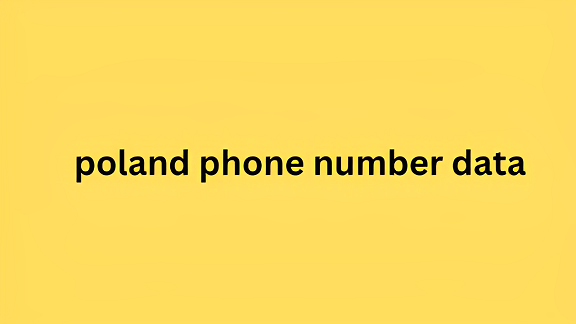In 2011, a tech geek on a computer forum suddenly had an idea and asked this question. After some searching, he actually found the answer. The most common number in the world is: 214-748-3647. At that time, this number had about 285,000 search results on Google.
There are also many in China
Who is the owner of this number ? How can it appear on so many websites at the same time?
In fact, this string of numbers has a “mysterious power”. It is not only the most common number, but also often appears in the fields of engineering and computers. If you see this string of numbers, it is best to stop and think about whether there is something wrong.
Mysterious value: 2,147,483,647
2,147,483,647 is not an ordinary number.
First of all, it happens to be a prime number , and the value of 2,147,483,647 is equal to 2^31 − 1, so it is also the 8th Mersenne prime (that is, a prime number that is a power of 2 minus 1).
However, the most important identity of 2,147,483,647 is the upper limit of the counting of 32-bit computer operating systems .
The vast majority of today’s computer systems can trace their roots to the IBM System/360 operating system, the world’s first instruction set compatible computer.
In this system, integers are stored using 4 bytes. A byte is 8 bits, and 4 bytes is 32 bits. The highest bit is the sign bit, so there are only 31 bits left. Because a bit has two states (0 or 1), the maximum integer that can be stored in this way is 2 to the power of 31 minus 1 (0 takes up one position), which is 2,147,483,647.
If the integer stored in the system exceeds this value, an integer overflow will occur and the value will be automatically converted to 2,147,483,647.
Apparently, there are a lot of lazy programmers who treat phone numbers as ordinary integers and use 4 bytes to store them. So when the number entered by the user is greater than 2147483647, it will be automatically converted to this number. It has become the most common phone number on the Internet.
If it exceeds 2,147,483,647, something terrible will happen.
The number 2,147,483,647 is not only the most common phone number, but also often appears in other places.
In 2020, in the game “Genshin Impact”, a player used a cheat and the damage value he dealt was exactly 2,147,483,647 points (because it couldn’t be higher).
Doing this in the game will get you banned, and it’s also very unethical, so don’t try it.
Under normal circumstances, this value is approximately equivalent to 2.1 billion, which is completely sufficient. However, with the rapid development of the Internet, it is not impossible to exceed this value.
In December 2014, the cumulative number of YouTube views of the Internet hit song “Gangnam Style” exceeded this value. YouTube saw this as a good public relations opportunity and revised the counting system. The new counting limit is 9,223,372,036,854,775,808, which is 100 million times higher than the old counting method.
Integer overflow in the virtual world is a minor matter, but in the engineering field, integer overflow may cause the program to crash, which has serious consequences.
In 2015, the Federal Aviation Administration (FAA) released a report stating that Boeing 787 aircraft may suddenly “crash” due to integer overflow problems.
Specifically, the control component responsible for regulating the power supply of the aircraft engine keeps time with an accuracy of 0.01 seconds. When the aircraft flies continuously for 248 days, the timing system will reach 2,147,483,647 0.01 seconds, and then an overflow will occur, causing the control component to activate failsafe mode.
Although this problem is terrible, the solution is very simple and crude, that is – scheduled shutdown and restart .
What happens when the time reaches 2,147,483,647 seconds?
Most of the time, restarting a device will not cause the time to reset, such as the time displayed on your phone. The UNIX time system is mainly used in such devices, starting from 00:00:00 (UTC) on January 1, 1970. So, when will this system reach its limit? The answer is – in 15 years.
In 1999, a programmer named William Porquet discovered that 03:14:07 on January 19, 2038, would be exactly the 2,147,483,647th second since January 1, 1970. This was like the 2038 version of the “millennium bug” problem. So Porquet built a website, 2038.org, to remind his peers to debug in a timely manner.
Of course, he also received a lot of feedback like this: “Okay, then we will debug it in 2037.”
Porquet is worried that some unmaintained software will crash, causing unknown consequences. However, Markus Kuhn, a computer scientist at Cambridge University, told the BBC that many old software and equipment are expected to be obsolete by then, or have been upgraded during the Y2K problem in 2000, and it is expected that there will be no problems more serious than the Y2K problem in 2038.
When it comes to equipment obsolescence, at least landlines are already on this path.
Over the past decade, fixed-line phones have been gradually replaced by mobile phones around the world. Think about the last time you used a fixed-line phone and you can intuitively feel this trend. In China, the penetration rate of fixed-line phones has dropped from 21.3 per 100 people in 2011 to 12.8 per 100 people in 2021, which means that only about one in ten people still use fixed-line phones .
Data source: Ministry of Industry and Information Technology|cnii.com.cn
With the demise of landlines (and the progress of programmers), the legendary most common phone number 214-748-3647 has become the tear of the times, just like landlines. If you like this number, you can toast to it in your heart at 11:14:07 on January 19, 2038, Beijing time, and celebrate that mankind has safely survived a small crisis.





